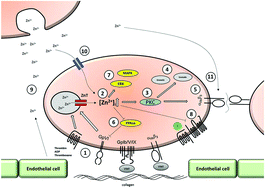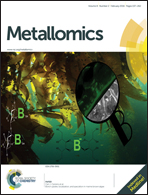The contribution of zinc to platelet behaviour during haemostasis and thrombosis
Abstract
Platelets are the primary cellular determinants of haemostasis and pathological thrombus formation leading to myocardial infarction and stroke. Following vascular injury or atherosclerotic plaque rupture, platelets are recruited to sites of damage and undergo activation induced by a variety of soluble and/or insoluble agonists. Platelet activation is a multi-step process culminating in the formation of thrombi, which contribute to the haemostatic process. Zinc (Zn2+) is acknowledged as an important signalling molecule in a diverse range of cellular systems, however there is limited understanding of the influence of Zn2+ on platelet behaviour during thrombus formation. This review evaluates the contributions of exogenous and intracellular Zn2+ to platelet function and assesses the potential pathophysiological implications of Zn2+ signalling. We also provide a speculative assessment of the mechanisms by which platelets could respond to changes in extracellular and intracellular Zn2+ concentration.

- This article is part of the themed collections: Metallomics Recent HOT articles and Zinc in the Biosciences

 Please wait while we load your content...
Please wait while we load your content...